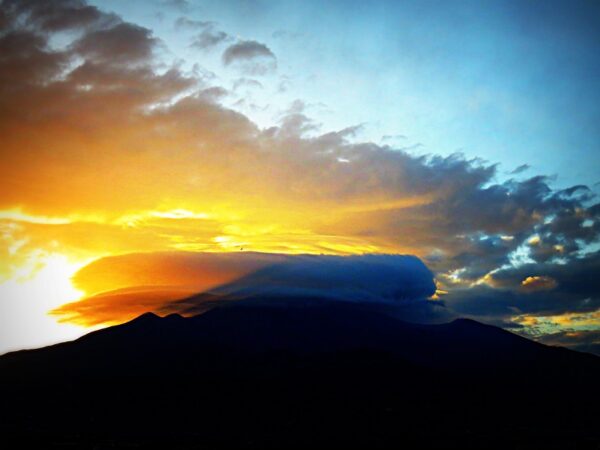Can the world end in just 11 days? Maybe not, for many of us, but for those who experienced the November 1843 eruption of Mount Etna up close, that must have been the sensation. And for some of them the world really ended that week. A brief but violent, intense event that left a trail of fear, fire – and death – on the western side of the volcano. We must immediately say that Etna, in its eruptive history, has almost never caused human victims. This is also why it is known as the “good volcano”. But on some rare occasions, even this mountain has exacted its toll of human sacrifices. The 1843 eruption was one of these rare occasions and took 36 lives.
How the 1843 eruption began
After a series of seismic tremors, on November 17th, 1843 the earth split on the northwest side of Mount Etna. The fracture descended from an altitude of 2375 m to 1900 m in a few hours, freeing about fifteen eruptive vents and as many lava fountains. The show will have immediately appeared apocalyptic, with that sea of fire rapidly descending towards the towns of Maletto and Bronte. The lava reached the old crater Mount Egypt and here it divided into three branches, threatening as many cities (in addition to Maletto and Bronte, also Adrano).
The evolution of the event
The fastest lava stream was the one that threatened to reach Bronte in a few hours. It was diverted, just 3 km from the first houses of the town, by a small hill called Victory Hill. Bronte was thus saved from destruction but the lava continued its descent, also cutting the road that connected Messina to Palermo.
On November 25th, the fire had reached the lower part of the valley, invading cultivated fields, streams and wells. In one of these land properties, perhaps when it met an aquifer that fed the nearby Simeto river, the lava swelled forming an enormous bubble. This, exploding, projected flaming boulders and molten rocks within a radius of several meters, killing anyone in its path. There were 36 victims and many more wounded, burned forever. The eruption ended on November 26th, after having emitted 52 million cubic meters of magma.
You can read the detailed story of this eruption, only in Italian though, at this LINK.
 The sites of the 1843 eruption
The sites of the 1843 eruption
You can visit the places of the 1843 eruption starting from Bronte. The beautiful city of pistachios offers a rich and fascinating historic centre, which is certainly worth a stroll among lava stone sanctuaries, ancient convents and noble palaces such as the now famous Castle of Nelson.
The extension of this lava front is truly immense, it forms a real black desert on the western flank of Etna. From this rock desert the tops of some craters emerge, among which: Mount Egitto, today covered with downy oaks and pines; Mount Lepre, which hosts a wood in which one of the secular oaks of Etna rises; Mount Nunziata, inside which there is an enormous cave (9×15 metres) which culminates in a well almost 8 meters deep.
Do not miss a visit to the historic city of Adrano, with its romantic lava “donjon” in the square, and to the small capital of Sicilian strawberries, Maletto. (photos G Musumeci)